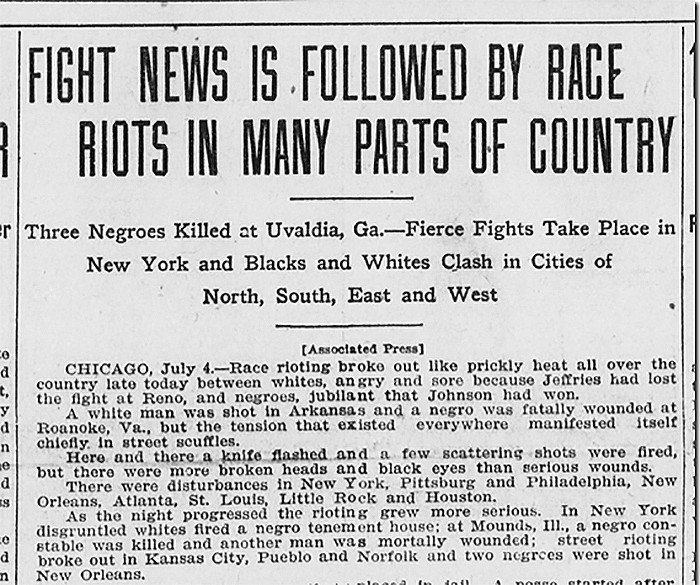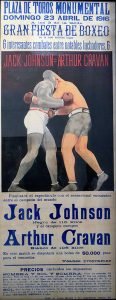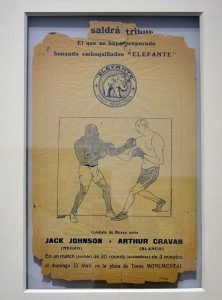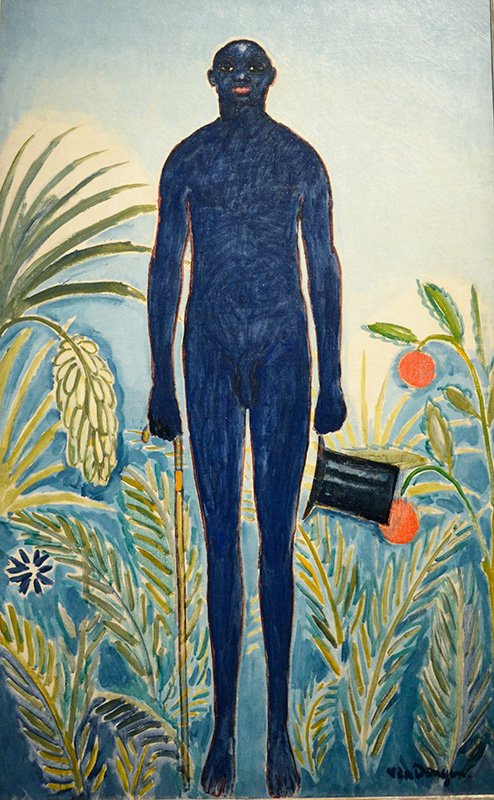Jack Johnson lived by his own rules
At a time when black Americans lived under oppressive Jim Crow laws, when looking at a white person could get you beaten or hung, when “a black male could not offer his hand (to shake hands) with a white male because it implied being socially equal”, Jack Johnson lived life on his own terms. His determined stare never wavered as he challenged the segregation rules in boxing until they finally relented. He forced governments and people to put their money where there mouth was. If people in America were free, then so was he. And what he wanted was a chance to fight the best…and win.
“Johnson’s story is more than the story of a tremendous athlete, or even one who broke a color line,” said Ken Burns. “It is the story of a man who forced America to confront its definition of freedom, and that is an issue with which we continue to struggle.” [read more…]
Musée d’Orsay Exhibition Le Modèle Noir
But before we get to the Galveston Giant, I’d like to set the scene. I found these boxing posters while wandering around the Musée d’Orsay for Le Modèle Noir Exhibition. They’re posters from the Johnson vs Artur Cravan fight held in Barcelona in 1916 [read more about the exhibit…].
They also had this large painting by Kees van Dongen called “Morning Walk” (c. 1919).
Now back to Jack Johnson a man who dared to question white rule & race laws
“Late in 1908, the day after Christmas, the African American boxer Jack Johnson finally got his opportunity to fight for the heavyweight title of the world. Until then, this title had been an exclusively white affair. The fight would take place in Sydney, Australia, home to the White Australia policy since 1901.
The world champion was the Canadian fighter Tommy Burns. He had evaded Johnson at every turn, choosing to fight one white contender three times rather than face the formidable black man, repeatedly telling the press, “all coons are yellow”. But Johnson refused to be ignored. He followed Burns all over the world – from San Francisco to New York, from Paris to London and finally to Sydney. The press called him a “buck nigger” and chided him for “gross and overbearing insolence”. But Johnson would not be denied, or cowed. As film-maker Ken Burns put it, in his documentary Unforgivable Blackness (2004), “when whites ran everything, Jack Johnson took orders from no one…
But in the 14th round it looked so grim for the white man that a knockout seemed certain and the police had to act. Following a preconceived plan, they stopped the movie cameras and stopped the fight. And so, the world was spared the spectacle of a black man knocking out a white man. The race war in proxy form had been fought and the white race had lost, but the world was denied the finale.” [read more…]
“The sport had never seen as one-sided a championship bout as this one. Yet the America of 1908 refused to call this black Texan its champ. As journalist Jack London, an iconic but racist figure in American literature, wrote afterward: “But one thing remains. (Retired champ James) Jeffries must emerge from his alfalfa farm and remove that smile from Johnson’s face.” What troubled white people like London most was how Johnson wore their title. His grin, his arrogance and his insatiable hunger for the high life riled them, and his penchant for loving their women fanned their racism.
…no black fighter had ever worn the belt, and white America wasn’t about to stand idle and allow the symbol of its athletic superiority to rest around a black man’s belly. They would bend and reshape their rules to keep their championship away from men like Johnson, Sam Langford or Joe Jeannette. But you have little choice but to admire Johnson, or any other man, for keeping his focus on a prize. He spent two years in the early 1900s chasing champion Tommy Burns, badgering the Canadian into acting like a champ. You can’t claim to be the best, Johnson told anybody who would pay him any mind, if you haven’t beaten the best — him…
Their anger boiled over into racial violence and murder in cities across the United States, and it led to the first search for a “Great White Hope.” And what did Johnson think of this search? Not a damn thing.” [read more…]

Read more about Jack Johnson & Jim Crow
• Unforgivable Blackness: The Rise and Fall of Jack Johnson
• Black History Month: The Defiant, True-Original Jack Johnson
• Boxing day belting: the fight that stirred the racial convictions of the nation
• When a black fighter won ‘the fight of the century,’ race riots erupted across America
• Jack Johnson vs James J. Jeffries
• Racism in America: Small Town 1950s Case Study Documentary Film


